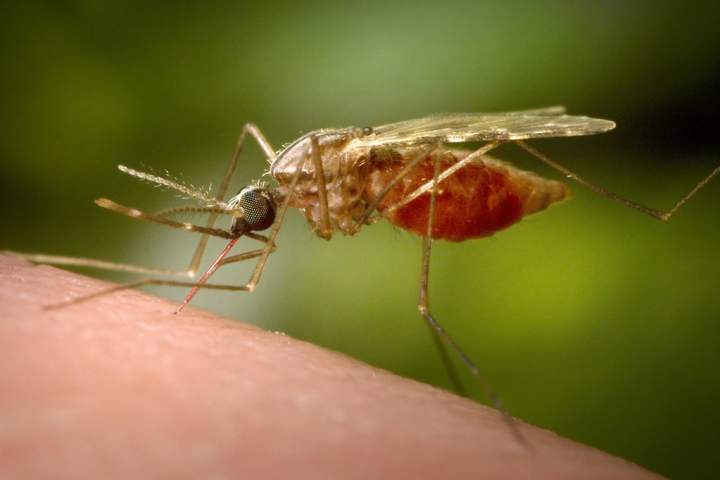Top Stories
Urgent: Hamilton Man, 2 Horses Infected with Rare EEE Virus

BREAKING: A Hamilton man and two horses have been confirmed infected with the rare and potentially deadly Eastern Equine Encephalitis (EEE) virus, health officials announced. This alarming development has prompted local authorities to urge immediate mosquito precautions to protect residents and pets.
The Hamilton Public Health Services reported that laboratory tests confirmed the human case of EEE late last month. The infected individual had no known travel history, raising concerns about local transmission. Symptoms typically emerge three to ten days after a mosquito bite, with many individuals remaining asymptomatic. However, those who do experience symptoms may suffer from mild flu-like illness, including fever, headache, and fatigue. Severe cases can lead to brain inflammation, characterized by sudden headaches, high fever, chills, and vomiting.
In addition to the man, two horses in the region have also tested positive for EEE this year, including one case recorded on August 18. The situation is particularly concerning given the 30 percent fatality rate among severe cases, as highlighted by the Public Health Agency of Canada (PHAC).
In a statement released on August 28, Dr. Bart Harvey, associate medical officer of health, emphasized the need for residents to take precautions. “While the risk of being infected with EEE virus is low, residents should take precautions to avoid illness spread by mosquitoes,” he stated. Recommended preventive measures include using insect repellent containing DEET or Icaridin, wearing protective clothing, and eliminating standing water around properties to reduce mosquito breeding.
The risk of EEE infections is expected to diminish once heavy frost arrives, which will significantly cut down the mosquito population. However, this situation is urgent. Last September, an Ottawa resident tragically died from the virus, underscoring the serious health risks involved.
The EEE virus is primarily found in the eastern part of North America and is predominantly a seasonal threat, with cases peaking in the summer months. In recent years, the pattern of human infections has increased markedly, with PHAC reporting one of the largest outbreaks in the northeastern U.S. occurring in 2019, which involved 38 human cases, 23 of which were in the northeast.
The increase in EEE cases is complex and not fully understood, but experts suspect it may be linked to environmental changes that foster higher mosquito populations and enhance virus transmission cycles.
Residents of Hamilton and surrounding areas are urged to stay informed and vigilant as health officials continue to monitor this developing situation. Taking proactive measures now can significantly reduce the risk of infection and protect community health.
-

 World3 months ago
World3 months agoScientists Unearth Ancient Antarctic Ice to Unlock Climate Secrets
-

 Entertainment3 months ago
Entertainment3 months agoTrump and McCormick to Announce $70 Billion Energy Investments
-

 Lifestyle3 months ago
Lifestyle3 months agoTransLink Launches Food Truck Program to Boost Revenue in Vancouver
-

 Science3 months ago
Science3 months agoFour Astronauts Return to Earth After International Space Station Mission
-

 Technology2 months ago
Technology2 months agoApple Notes Enhances Functionality with Markdown Support in macOS 26
-

 Top Stories1 week ago
Top Stories1 week agoUrgent Update: Fatal Crash on Highway 99 Claims Life of Pitt Meadows Man
-

 Sports3 months ago
Sports3 months agoSearch Underway for Missing Hunter Amid Hokkaido Bear Emergency
-

 Politics2 months ago
Politics2 months agoUkrainian Tennis Star Elina Svitolina Faces Death Threats Online
-

 Technology3 months ago
Technology3 months agoFrosthaven Launches Early Access on July 31, 2025
-

 Politics3 months ago
Politics3 months agoCarney Engages First Nations Leaders at Development Law Summit
-

 Entertainment3 months ago
Entertainment3 months agoCalgary Theatre Troupe Revives Magic at Winnipeg Fringe Festival
-

 Politics1 week ago
Politics1 week agoShutdown Reflects Democratic Struggles Amid Economic Concerns





















